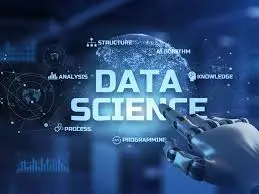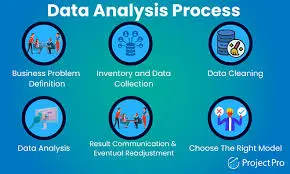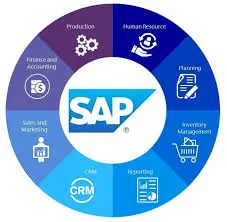All Courses
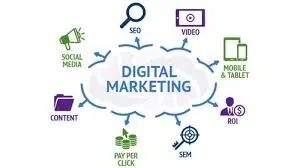
AI in digital marketing uses artificial intelligence capabilities such as data collection, natural language processing, machine learning, and analytics to drive better business insights, and automate marketing tasks and decisions.
The advantage of AI is that it will help you gain insights into customer behaviors at speed by harvesting vast amounts of data.
These can be used to respond to and tailor a customer’s needs depending on their actions and preferences. AI is also able to adapt and improve over time using feedback and new data.
Artificial intelligence offers great opportunities for marketers to be more effective and personalized. This means customers get relevant content that can be triggered by actions on a site, an ad, or a branded message.
But AI doesn’t replace the roles and efforts of humans! It is a technology that complements and enhances those but it requires human skills to use it effectively.
AI Digital Marketing Tools
While ChatGPT may be the most talked-about generative AI tool, there are so many more out there that are helping marketers in their daily roles.
They can help marketers in a variety of functions from content generation to automation to SEO and design.
Here are some of the best AI tools out there:
- Writer - A highly-rated content generation tool that can repurpose content and includes an AI writing assistant
- Midjourney - Generative AI that can convert natural language prompts into images
- Optimove - A customer data platform with AI-based marketing functions
- Zapier - Helps automate workflows by connecting apps and services that your company uses
- Manychat - Provides an interactive customer experience using NLP to respond to customers on social platforms including WhatsApp
- Evolv.ai - Uses AI and machine learning algorithms to improve customer experiences in real-time
- Surfer SEO - A cloud-based on-page optimization tool that analyzes and compares your pages against what currently ranks on the SERPs
- Mailchimp - Uses AI to optimize email campaigns by predicting the best send times and personalizing content
- Perplexity - Similar to ChatGPT but more suitable for research as it uses web citations in a clearer way
- Drift - An AI chatbot that enhances lead generation and customer interaction
- Buffer - Responsible for social media management, offering post scheduling, analytics, and content curation
- Tableau - An AI-powered data visualization and intelligence tool that helps marketers analyze data and extract actionable insights
Examples of AI in Digital Marketing
The power of AI means it can be leveraged across many digital channels. Companies use it for social media campaigns, to automate tasks and processes, and for digital advertising.
It can also be used in any industry. Beauty brands use it to deliver a tailored customer experience such as Sephora’s AI chatbot-powered shopping service and its Virtual Artist App.
1. Content and image creation
Marketing teams are often under pressure to create content quickly for many purposes and channels. However, creating good content takes time and effort, and a lot of marketers are time- and resource-poor.
AI copywriting tools such as ChatGPT and Claude have exploded because they help people to generate content: that’s why they’re called generative AI tools! This could be email subject lines, ad copy, landing pages, blogs, or anything else you need for your content marketing.
You can also use AI writing prompts to create catchy headlines and customize content for your audience which drives personalization and use AI to boost your influencer marketing campaigns and manage your relationships.
Using these tools saves time and money. However, make sure to read over any content before publishing it live to ensure it has personality and fits in with your brand voice.
"People use AI because it's lower cost and highly scalable. But if you don't have a good creative platform and it doesn't come from creative and data-driven insights, then it's just spray and pray really,” says Mischa McInerney, CMO at the Digital Marketing .
2. Customer service and support
AI-driven chatbots have been around for a while as a way to communicate with and provide information to customers. When people want to get instant answers to simple queries or interact with a brand, they first go to a chatbot.
However, AI has a bigger role when it comes to customers. It can improve customer experience by personalizing content and messaging, anticipating customer needs, streamlining purchasing, and directing queries or concerns to the right department o
3. Customer segmentation
Customer segmentation and targeting help you identify and influence your most valuable customers. However, doing this manually can be time-consuming and costly.
AI can use algorithms to segment your prospects and customers into groups or segments of people with similar interests, needs, or behaviors.
You can then communicate with and target these segments with relevant and customized messaging that can be adapted and adjusted in real time.
Recommendation systems can suggest products, services, or offers that match customer preferences while Natural Language Processing (NLP) can analyze customer feedback and reviews to improve your products, services, or customer experience.
4. SEO
Artificial intelligence has huge potential in the area of search engine optimization (SEO). Search engines such as Google have been using sophisticated algorithms that crawl and index web pages to rank them.
Now, AI is becoming further integrated with that process in a way that is changing the world of search even more, through AI Overviews (previously known as Search Generative Experience (SGE)
AI can automate and improve keyword research and content optimization by analyzing user behavior, along with creating meta tags and headings. Marketers can also use it to predict SEO trends, user behavior, and algorithm updates through predictive SEO.
Voice and visual search are becoming more important ways for people to find information, and AI can help optimize both. This can be done by focusing on NLP and long-tail keywords and including relevant metadata on images.
Pro tip: Read more about what AI Overviews mean for Search
5. Pay-Per-Click advertising
Pay-per-click (PPC) advertising is a form of advertising where you pay when someone clicks your ad. As a strategy, PPC marketing is important as it can attract new customers through targeted campaigns, get quick results, and be easily tweaked and optimized.
AI can be used to enhance your PPC campaigns by optimizing:
- Keyword research
- Bidding and targeting
- Ad creation
- Ad scheduling and placement
- Predictive analysis
- Fraud detection
As the technology continues to evolve, marketers can see new ad formats, targeting techniques, and measurement tools for PPC. This is why it’s so important to keep an eye on developments and stay up to date.
6. Data analytics
With so much data available from a wide variety of channels, marketers can often feel overwhelmed. However, artificial intelligence can process vast volumes of data at speed. This can help marketers gain insights from data, along with using historical data to predict trends and behaviors.
AI can also be used to detect anomalies in data and uncover patterns. The combination of AI and data analysis can help drive hyper-personalization. The better you know your customers, the more targeted you can be in your messaging and approach. In retail, for example, it can be used to manage inventory and optimize customer service.
ChatGPT has excellent data analysis capabilities, especially if you use its Advanced Data Analysis plugin. This enables you to feed a spreadsheet to ChatGPT, and it then helps you to unearth deep insights above the data in your spreadsheet.
Ultimately it’s about using AI technology in data analysis to drive better business insights in a way that works for you.
7. Email marketing
Email marketing is an important part of any marketing strategy as it continues to be an effective way to convert prospects and engage customers. Using AI tools in your email marketing can save you time and improve performance.
By using AI in emails, you can:
- Analyze email performance to identify how to optimize your email strategies (e.g. high-performing subject lines)
- Create triggered workflows driven by user actions
- Conduct campaign and workflow analysis
- Craft copy tailored to your audience
- Personalize content to audience segments
- Enable dynamic content
- Perform A/B testing
AI can also curate your email lists by comparing metrics to determine the value of an email address or email list. You can also get insights about your email schedule by tracking the value generated by each email and analyzing the frequency.
What are the Pros and Cons of AI in Digital Marketing?
As with any evolving technology, there are advantages and disadvantages to using artificial intelligence. There are also ethical implications to take into account in terms of data privacy, bias, and discrimination.
What are the Pros of AI in Digital Marketing?
- Boosts productivity - Automate a variety of jobs so your time and effort can be redirected to more difficult and strategic tasks.
- Drives efficiency - Handle mundane and repetitious activities such as data input, separating marketing campaign leads, and replying to consumer queries.
- Reveals insights - Eliminate guesswork and provide data-driven capabilities to develop a more effective marketing approach and open up new marketing opportunities.
- Increases ROI - Predict buying behavior and choices by evaluating data, improving the UX, and providing consumers with the content they require to complete their buyer journey.
- Create and optimize content - Automate content creation to produce quality content at scale for all online channels.
- Personalize at scale - Analyze customer data and generate personalized recommendations or content to enhance customer experience.
- Predictive analysis - Forecast consumer behavior or market trends based on historical data to help more accurate and effective planning.
- Automate tasks - Handle routine tasks such as data analysis, customer segmentation, email sorting, data entry or basic reporting.
The Cons of AI in Digital Marketing
- Bias - AI can only be as effective as the data it draws on so it’s not inherently neutral. This means you need to be aware of the potential for racial, gender, cultural, or socioeconomic biases in your AI-driven strategies.
- Inaccuracy - Mistakes or inaccuracies in data can lead to faulty analyses and potentially costly business decisions.
- Ethics - Ethical concerns include the manipulation of user data and behavior, consent, and the ‘creepiness factor’ in hyper-targeted ads.
- Data sensitivity and security - AI systems often require access to extensive datasets, which may include sensitive information that needs to be securely managed.
- Transparency - As AI-generated content becomes more common, questions about transparency, plagiarism, authorship, and IP ownership become relevant.
What are the Most Common Skills Used in AI-Driven Digital Marketing?
The key to using AI technology effectively is to make it fit in with your role. It's not enough to know how to use artificial intelligence. You also need to know why you're using it.
For example, does it align with your business and career goals? Will it help you deliver organizational objectives more efficiently? Is it saving you time rather than just creating more tasks?
You need to understand the basics but also take a deep dive into AI to use it to meet your goals whether that be generating and nurturing leads or improving customer service.
Here are some of the key technical skills you should consider brushing up on to improve your broader competency with AI technology:
- Data management
- Data analysis
- Testing
- Content personalization
- Marketing automation
- Process analysis and improvement
Developing these skills using AI may alleviate some of the fear you might feel when dealing with the technology. The more familiar you become with the models and technology, the less intimidating it becomes!
But it’s not just about hard skills like coding or content marketing. Companies seek marketers with outside-the-box thinking and skills that make them solution-focused.
“I speak to a lot of people in ad agencies and learning and development at big companies and they often talk about hard skills. I want to see people learn how to code. I want to see them apply this and get ROI,” says Clark Boyd on the DMI podcast.
Four areas that are important to focus on for broader or soft skills in the context of AI are:
- Strategic thinking
- Innovation
- Creativity
Conclusion: AI in Digital Marketing
We know that artificial intelligence can be daunting and it’s difficult to see where and how it fits into your role. But it shouldn’t be seen as a threat. AI can become an invaluable ally as you look to effectively meet your goals.
After all, AI tools are great for looking after mundane, predictable, and labor-intensive tasks. This frees you up to focus on the more creative and strategic aspects of your job.

The full stack developer definition is “someone who can work on both the back-end and front-end of systems.” This means that they can develop fully fledged platforms (with databases, servers and clients) which don't need other applications to function.
Full-stack developers have the skills to work on both the front and back end of websites, video games, applications, and other projects. This career requires diverse skills like HTML, CSS, JavaScript, Oracle, SQL Server, Java, Python, Ruby on Rails, version control systems, project management, and more.
Is being a full-stack Java developer a good career choice? Yes! A full-stack developer is someone who can develop both the frontend and backend of a website. This means they can work on everything from coding the user interface to creating databases to writing code that runs on the server.

A DevOps engineer is responsible for smoothly operating a company's IT infrastructure. They work with developers to deploy and manage code changes and with operations staff to ensure systems run smoothly. A DevOps engineer must have a deep understanding of development and operations processes and a strong technical background to succeed.
Essential Skills for a DevOps Engineer
A DevOps engineer’s role requires technical skills in the development cycle and operations skills for maintenance and support. Computer Science or Technology graduates can bring the technical skills necessary to become a DevOps engineer. However, the skills required for managing the operations usually come through experience or enrolling in specific development programs, which can help further the career in the set direction.
Career Growth Opportunities for DevOps Engineers
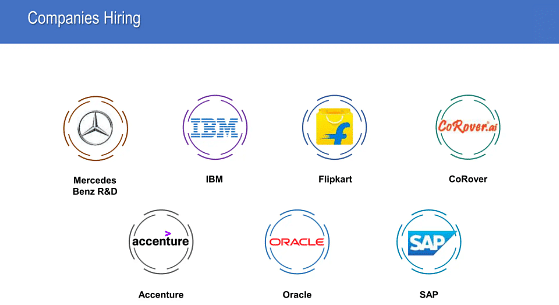
As organizations continue to embrace DevOps practices to streamline software delivery and improve operational efficiency, the demand for skilled DevOps engineers has surged exponentially. DevOps engineers drive digital transformation initiatives, automate workflows, and foster collaboration between development and operations teams. This article explores the career growth opportunities available to DevOps engineers as they navigate their professional journeys in today's dynamic technology landscape.
Diverse Career Paths
DevOps engineering offers a multitude of career paths and opportunities for specialization. DevOps engineers can focus on cloud computing, containerization, infrastructure automation, continuous integration/continuous deployment (CI/CD), security, or site reliability engineering (SRE). By honing their skills in these specialized areas, they can discover unique career trajectories aligned with their interests and aspirations.
Leadership Roles
With experience and expertise, DevOps engineers can transition into leadership roles such as DevOps team lead, DevOps manager, or DevOps architect. These roles involve overseeing and orchestrating DevOps initiatives, driving strategic decision-making, and shaping the organization's DevOps culture and practices. Leadership roles offer opportunities to mentor junior team members, influence organizational transformation, and drive innovation at scale.


- Generates sales quotes
- Processes orders
- Manages customer databases
- Manages pricing
- Manages delivery
- Manages billing
- Manages taxation
- Manages availability
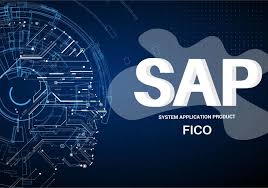
- FI: Focuses on accounting and external reporting, such as balance sheets and profit and loss statements
- CO: Focuses on internal cost analysis and strategic decision-making
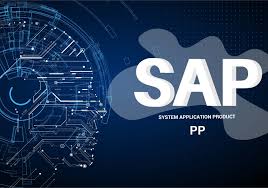
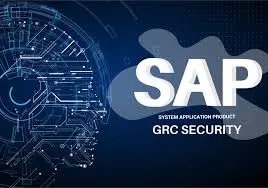
- How SAP GRC works
- Risk managementIdentify threats, create processes to protect against them, and monitor risks
- Compliance managementEnsure the organization follows regulations, accounting practices, and ethical standards
- CybersecurityMonitor cyberthreats, identities, and compliance across systems and processes
- Global tradeManage trade compliance based on regulations, geopolitical risks, and other factors
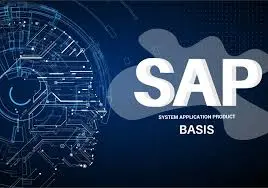
- Manages communications between the application and database layers
- Ensures that all SAP systems run smoothly
- Manages system administration tasks like user management, authorizations, and performance monitoring
- Enables the portability of SAP applications between systems and databases
- Ensures that SAP applications are installed and configured correctly
- Troubleshoots and resolves issues with SAP services
- Addresses SAP security issues

- Authentication and authorization: Verify identities and access rights
- Transaction monitoring: Manage critical transactions and ensure proper authorization
- Secure communication: Protect data in transit to prevent interception and tampering
- System audits: Identify security gaps and ensure that security measures are effective
- SAP Cloud Identity Services: Manage authentication, single sign-on, and the identity lifecycle
- SAP Enterprise Threat Detection (ETD): Identify, analyze, and neutralize cyberattacks in SAP applications
- SAP Security Optimization Services: Protect business processes through security services

- Helps businesses improve employee experience
- Helps businesses make better people decisions
- Helps businesses connect HR across their organization
- Helps businesses increase employee engagement and productivity
- Helps businesses plan, manage, support, develop, and reward their workforce

- Manages warehouse logistics, including goods movement processing
- Controls warehouse activities like collecting, recording, and managing goods receipts
- Manages storage, processing, and transportation of hazardous materials
- Supports the entire warehouse process, from receiving goods to picking and packing them

- Procurement: Automate the procurement process from source to settle
- Spend management: Control spending, find savings, and build ethical supply chains
- Supplier management: Onboard, qualify, and manage suppliers
- Contract management: Ensure compliance with agreed-upon terms
- Invoice management: Create, validate, and match invoices to POs, contracts, and receipts
- Catalog maintenance: Maintain catalogs and search for goods and services
- Workflow management: Manage workflows for procure to pay

- Prevent defects: Helps businesses identify and fix issues before they reach customers
- Improve customer satisfaction: Helps businesses meet customer expectations
- Reduce operating costs: Helps businesses comply with quality regulations
- Improve process efficiency: Helps businesses implement continuous improvement programs

- Helps businesses manage the process of getting a product from raw materials to the customer
- Helps businesses optimize supply chain operations
- Helps businesses improve resource efficiency, demand planning, and inventory management

- Prevents errors and problems from occurring in production
- Ensures the effectiveness and reliability of SAP systems
- Helps to prevent operational disruptions and financial losses

- Application development: Supports the entire application development lifecycle, from ideation to deployment and management
- Data and analytics: Explore data, find trends, and make actionable plans
- Automation: Automate business processes
- Integration: Centralize integrations to enable faster, more reliable data flows
- Artificial intelligence: Use AI to develop, automate, and integrate business applications

- Access requests: Users can request access to applications in the cloud and on-premise systems
- Access analysis: Risk evaluations are conducted using predefined rules
- Role design: Business roles are created and maintained
- Access certification: Access is reviewed
- Privileged access management: Logs are consolidated and reviewed with automated log assessment for fraud

- Employee experience: Helps create a more engaged and productive workforce
- Payroll: Manages employee salaries, overtime, and other compensation
- Talent management: Helps with career exploration, self-service options, and recommendations
- HR analytics: Provides real-time insights into people data
- Reporting: Helps HR teams create comprehensive and up-to-date reports

- Improved collaboration: Teams can work together using a common record of product data
- Centralized data management: All stakeholders can access real-time information
- Streamlined processes: Helps businesses develop and deliver products more efficiently
- Quality management: Ensures that product designs meet quality standards
- Regulatory compliance: Helps businesses adhere to industry-specific regulations
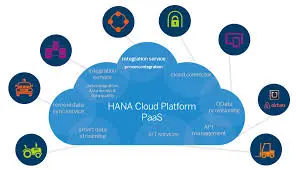
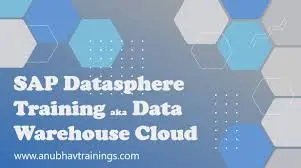

- How to use Signavio's tools to design, analyze, and improve business processes
- How to manage process changes
- How to monitor the success of process adjustments
- How to visualize and analyze customer journeys and experiences
- How to map out the end-to-end journey of customers
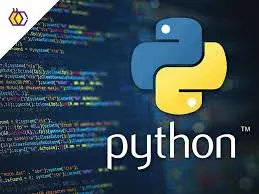
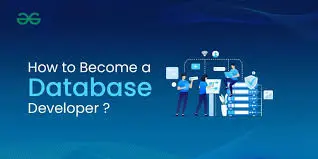



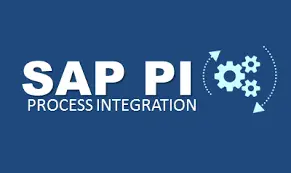
- Integration: Allows businesses to integrate their legacy systems with their SAP stack
- Synchronization: Allows businesses to synchronize data across systems
- Cost-effectiveness: Allows businesses to integrate systems in a more cost-effective way
- Openness: Allows businesses to connect to existing integration solutions
- Pre-delivered integration content: Provides out-of-the-box integration solutions
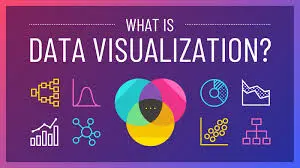
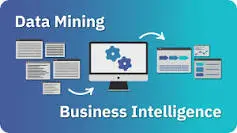

- Improved Data Quality: Cleaning ensures data is accurate, complete, consistent, and reliable.
- Better Analysis: Clean data allows for more accurate and meaningful insights from data analysis and reporting.
- Enhanced Decision-Making: Reliable data supports better decision-making processes.
- ETL Process: Data cleaning is a crucial step in the Extract, Transform, Load (ETL) process, ensuring that only high-quality data is loaded into data warehouses.
- Identifying and Correcting Errors: This includes fixing typos, incorrect values, and inconsistent formats.
- Handling Missing Data: Deciding how to deal with missing values, such as imputation or removal.
- Removing Duplicates: Identifying and eliminating duplicate records.
- Standardizing Data: Ensuring consistency in formats, capitalization, and units.
- Transforming Data: Converting data types, such as dates or numbers, to a suitable format.
- Removing Irrelevant Data: Identifying and removing data that is not relevant to the analysis.
- Validating Data: Checking that the data meets predefined quality criteria.
- Dealing with Outliers: Identifying and handling extreme values that may skew the analysis.
- Spreadsheet Software:Programs like Microsoft Excel and Google Sheets offer tools for cleaning data.
- Database Management Systems:SQL databases have built-in features for data manipulation and cleaning.
- Data Cleaning Tools:Specialized tools like OpenRefine are designed for cleaning and transforming data.
- Programming Languages:Languages like Python and R offer libraries for data manipulation and cleaning.
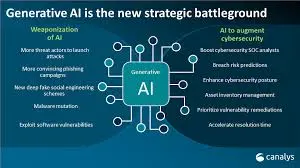
- What it is:Generative AI, also known as GenAI, is a subset of AI that uses generative models to produce new data instances.
- How it works:These models learn patterns and structures from vast datasets and then use that knowledge to generate new, original content.
- Examples of Generative AI:
- Text Generation: Tools like ChatGPT (powered by GPT models) can generate text, stories, articles, and more, based on user prompts.
- Image Generation: Models like DALL-E can create realistic or artistic images from text descriptions.
- Music Generation: AI can compose original music pieces based on various styles and parameters.
- Video Generation: AI can create videos, including animations and synthetic videos.
- Underlying Technology:Generative AI often relies on deep learning techniques, including:
- Generative Adversarial Networks (GANs): These involve two neural networks, a generator and a discriminator, that compete with each other to generate increasingly realistic outputs.
- Transformers: These are powerful models, like those used in GPT, that excel at processing sequential data, making them well-suited for text generation.
- Variational Autoencoders (VAEs): These models learn a compressed representation of the data and then use it to generate new data points.
- Applications:Generative AI has a wide range of potential applications, including:
- Content Creation: Generating marketing materials, articles, scripts, and more.
- Design and Art: Creating unique artworks, designs, and prototypes.
- Product Development: Generating new product ideas and designs.
- Scientific Research: Simulating complex phenomena and generating synthetic data.
- Education: Creating personalized learning materials and interactive experiences.
- Gaming: Generating dynamic game environments and characters.
- Examples of Generative AI tools:
- Adobe Photoshop: AI-powered photo editing.
- ElevenLabs: AI voice and audio generation.
- Suno: AI voice and audio generation for creative text-to-audio results.
- Beautiful.ai: AI presentation apps for design automation.
- Potential Issues:
- Bias: Generative AI models can reflect biases present in the data they are trained on.
- Copyright: Generated content may raise copyright issues if it mimics existing works.
- Misinformation: Generative AI can be used to create fake or misleading content.

- Definition:A mobile application is a software program that is designed to be used on a mobile device, such as a smartphone or tablet.
- Purpose:Mobile apps can be used for a variety of purposes, including communication, entertainment, productivity, and accessing information.
- Examples:Common examples include social media apps (Facebook, Instagram, Twitter), messaging apps (WhatsApp, Telegram), navigation apps (Google Maps, Waze), and gaming apps.
- Types of Mobile Applications:
- Native Apps: Developed specifically for a particular mobile operating system (iOS or Android) using its native programming languages (Swift/Objective-C for iOS, Java/Kotlin for Android).
- Web Apps (Progressive Web Apps - PWAs): Built using web technologies (HTML, CSS, JavaScript) and run within a web browser, offering a similar experience to native apps.
- Hybrid Apps: Combine elements of both native and web apps, using a web framework (e.g., React Native, Ionic) to create a cross-platform app that can run on multiple mobile operating systems.
- Key Components:
- User Interface (UI): The visual design and layout of the app, focusing on how it looks and feels.
- User Experience (UX): The overall experience a user has while interacting with the app, focusing on usability, ease of navigation, and overall satisfaction.
- Backend Services: The infrastructure that supports the app, including data storage, processing, and communication with other systems.
- API Integration: Allows the app to interact with external services and data sources.
- Mobile App Development:The process of creating mobile applications, which involves planning, designing, coding, testing, and deploying the app.
- Mobile App Development Platforms:
- Native Development: Using languages like Swift (iOS) and Kotlin/Java (Android).
- Cross-Platform Development: Using frameworks like React Native, Ionic, or Flutter.

Artificial Intelligence (AI) refers to the simulation of human intelligence in machines that are programmed to think and act like humans. It involves the development of algorithms and computer programs that can perform tasks that typically require human intelligence such as visual perception, speech recognition, decision-making, and language translation.
 Artificial Intelligence Tutorial
Artificial Intelligence TutorialThere are various Definition provided by the scientists of various fields about Artificial Intelligence, some of them are mentioned below:
"Artificial Intelligence is the study of how to make computers do things at which, at the movement, people are better". ~ Rich and Knight (1991)
"Artificial Intelligence is the study of the computations that make it possible to perceive, reason and act." ~ Winston (1992)
"AI is the study of mental faculties through the use of computational models". ~ Charniak and McDermott (1985)
Types of Artificial Intelligence
Artificial Intelligence (AI) is broadly classified into:

What is an AI Agent?
An AI agent is a software or hardware entity that performs actions autonomously, with the goal of achieving specific objectives. It operates by perceiving its environment, processing information, making decisions, and taking actions based on its perceptions and goals.
Types of AI Agents
- Simple Reflex Agents
- Model-Based Reflex Agents
- Goal-Based Agents
- Utility-Based Agents
- Learning Agents
- Multi-Agent Systems

Problem Solving in AI
Problem-solving is a fundamental aspect of AI, involving the design and application of algorithms to solve complex problems systematically. AI systems utilize various problem-solving techniques to find solutions efficiently and effectively.
1. Search Algorithms in AI
Search algorithms navigate through problem spaces to find solutions. They can be categories into uninformed search and informed searches.
- Uninformed Search Algorithm explores the search space without any domain-specific knowledge beyond the problem's definition. These algorithms do not use any additional information like heuristics to guide the search.
- Informed Search Algorithm use additional information (heuristics) to make decisions about which paths to explore. This helps in efficiently finding solutions by guiding the search process towards more promising paths.
2. Local Search Algorithms
Local search algorithms operates on a single current state (or a small set of states) and attempt to improve it incrementally by exploring neighboring states.
3. Adversarial Search in AI
Adversarial search deal with competitive environments where multiple agents (often two) are in direct competition with one another, such as in games like chess, tic-tac-toe, or Go.
4. Constraint Satisfaction Problems
Constraint Satisfaction Problem (CSP) is a problem-solving framework that involves variables, each with a domain of possible values, and constraints limiting the combinations of variable values. The objective is to find a consistent assignment satisfying all constraints.
Knowledge, Reasoning and Planning in AI
Knowledge representation in Artificial Intelligence (AI) refers to the way information, knowledge, and data are structured, stored, and used by AI systems to reason, learn, and make decisions. Common techniques for knowledge representation include:
First Order Logic in Artificial Intelligence
First Order Logic (FOL) is use to represent knowledge and reason about the world. FOL allows for the expression of more complex statements involving objects, their properties, and the relationships between them.
- Knowledge Representation in First Order Logic
- Syntax and Semantics of First Order Logic
- Inference Rules in First Order Logic
Reasoning in Artificial Intelligence
Reasoning in Artificial Intelligence (AI) is the process by which AI systems draw conclusions, make decisions, or infer new knowledge from existing information. Types of reasoning used in AI are:
To learn more about reasoning in AI, you can refer to: Types of Reasoning in AI
Planning in AI
Planning in AI generates a sequence of actions that an intelligent agent needs to execute to achieve specific goals or objectives. Some of the planning techniques in artificial intelligence includes:
- Classical Planning: Assumes a deterministic environment where actions have predictable outcomes.
- Probabilistic Planning: Deals with uncertainty in the environment, where actions may have probabilistic outcomes.
- Hierarchical Planning: Breaks down complex tasks into simpler sub-tasks, often using a hierarchy of plans to solve different levels of the problem.
Uncertain Knowledge and Reasoning in AI
Uncertain Knowledge and Reasoning in AI refers to the methods and techniques used to handle situations where information is incomplete, ambiguous, or uncertain. For managing uncertainty in AI, following methods are used:
Learning in AI
Learning in Artificial Intelligence (AI) refers to the process by which a system improves its performance on a task over time through experience, data, or interaction with the environment.
1. Supervised Learning: The model is trained on labeled dataset to learn the mapping from inputs to outputs.
- Linear Regression
- Logistic Regression
- Support Vector Machines (SVM)
- Decision Trees
- Random Forests
- Neural Networks
Semi-supervised learning uses both labeled and unlabeled data to improve learning accuracy.
2. Unsupervised Learning: The model is trained on unlabeled dataset to discover patterns or structures.
3. Reinforcement Learning: The agent learns through interactions with an environment using feedbacks.
4. Deep Learning: The concept focuses on using neural networks with many layers (hence "deep") to model and understand complex patterns and representations in large datasets.
- Perceptron
- Artificial Neural Networks
- Activation Functions
- Recurrent Neural Network
- Convolutional Neural Network
5. Probabilistic models in AI deals with uncertainty, making predictions, and modeling complex systems where uncertainty and variability play a crucial role. These models help in reasoning, decision-making, and learning from data.
- Gaussian Mixture Models (GMMs)
- Naive Bayes Classifier
- Variational Inference
- Monte Carlo Methods
- Expectation-Maximization (EM) Algorithm
Communication, Perceiving, and Acting in AI and Robotics
Communication in AI and robotics facilitates interaction between machines and their environments, utilizing natural language processing. Perceiving involves machines using sensors and cameras to interpret their surroundings accurately. Acting in robotics includes making informed decisions and performing tasks based on processed data.
Generative AI
Generative AI focuses on creating new data instances that resemble real data, effectively learning the distribution of data to generate similar, but distinct, outputs.
- Generative Adversarial Networks (GANs)
- Variational Autoencoders (VAEs)
- Diffusion Models
- Large Language Models
What is Artificial Intelligence?
Artificial Intelligence (AI) is a rapidly evolving field of computer science that focuses on creating intelligent machines capable of simulating human-like cognitive processes. At its core, AI seeks to enable machines to perceive their environment, learn from experience, reason, and make decisions autonomously. From virtual personal assistants and recommendation systems to autonomous vehicles and healthcare diagnostics, AI has become increasingly integrated into various aspects of our lives, revolutionizing industries and reshaping the way we interact with technology. As AI continues to advance, it holds the promise of solving complex problems, driving innovation, and transforming society in profound ways.
History of Artificial Intelligence
- 1940s-1950s: Early AI concepts emerged with neural networks and the Turing Test. The term "Artificial Intelligence" was coined at the 1956 Dartmouth Conference.
- 1960s-1970s: AI saw growth with developments like the first industrial robot and ELIZA, an early chatbot. However, limitations in AI research led to the first AI winter in the 1970s.
- 1980s: AI research revived with expert systems and the popularization of backpropagation in neural networks. Despite this, the industry faced another downturn by the late 1980s.
- 1990s-2000s: Significant breakthroughs included IBM's Deep Blue defeating Garry Kasparov and the introduction of deep learning techniques. AI began integrating into consumer products, like the Roomba and early self-driving cars.
- 2010s: AI experienced a boom with advancements in deep learning, natural language processing (e.g., IBM's Watson), and AI-powered assistants. Google DeepMind's AlphaGo marked a significant milestone.
- 2020s: AI became widespread in everyday life, with innovations like GPT-3 and AlphaFold, alongside growing ethical concerns surrounding AI's impact.

